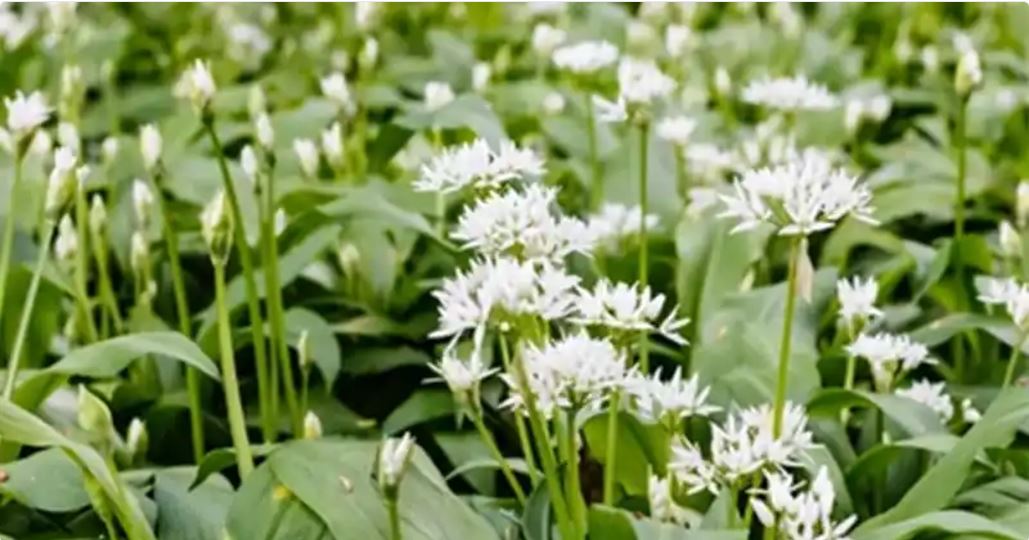
Ramsons, also known as wild garlic, bear’s garlic, or Allium ursinum, are a unique and versatile plant that often remains overlooked in the natural world. Often dismissed as a common weed, Ramsons are far from ordinary. This unassuming plant boasts a wide array of uses, from culinary delights to medicinal remedies and ecological significance, making it a hidden gem in the plant kingdom. In this article, we will explore the fascinating world of Ramsons and shed light on their important uses that many people may not be aware of.
Botanical Profile
Ramsons are perennial herbaceous plants belonging to the Allium genus, which includes garlic, onions, leeks, and chives. They can be found in temperate regions of Europe and Asia and are often associated with damp woodlands, riverbanks, and shaded areas. Ramsons typically grow to a height of 30-45 cm (12-18 inches) and have bright green, lance-shaped leaves that can reach lengths of up to 25 cm (10 inches). What sets them apart is their characteristic garlicky aroma, which is emitted from both the leaves and the small, star-shaped white flowers that appear in early spring.

Culinary Uses
Ramsons are a hidden culinary treasure, offering a unique flavor that combines the pungency of garlic with the freshness of chives. The leaves, flowers, and bulbs of this plant are all edible and have been used for centuries in traditional cuisine. Here are some culinary uses of Ramsons:
-
Flavorful Seasoning: Ramsons can be used as a flavorful addition to salads, soups, and sauces, providing a mild garlic taste without the intensity of cultivated garlic. The leaves are particularly popular for this purpose.
Wild Garlic Pesto: Ramsons make an excellent base for pesto, which can be used as a condiment, sauce, or spread. A simple recipe includes blending Ramsons leaves with nuts, olive oil, and Parmesan cheese.
Pickled Ramsons Buds: The flower buds of Ramsons can be pickled in a manner similar to capers, offering a tangy and garlicky twist to various dishes.
Fermented Ramsons: Some culinary enthusiasts experiment with fermenting Ramsons to create a unique probiotic-rich condiment.
Medicinal Uses
Beyond their culinary merits, Ramsons have a rich history of medicinal use:
-
Immune Boost: Ramsons contain essential vitamins and minerals, making them a natural immune booster. Their consumption is associated with improved overall health.
Antimicrobial Properties: Ramsons are known for their antimicrobial properties and have been used traditionally to combat infections and promote wound healing.
Cardiovascular Health: Some studies suggest that Ramsons may contribute to heart health by lowering blood pressure and cholesterol levels due to their allicin content, which is also present in cultivated garlic.
Digestive Aid: Ramsons have been used to alleviate digestive issues, such as bloating and gas, thanks to their mild laxative and carminative effects.
Ecological Importance
Ramsons are not just valuable in the kitchen and medicine cabinet; they also play a crucial role in their natural ecosystems:
-
Early Spring Pollinators: Ramsons’ early bloom in spring provides a vital nectar source for pollinators like bees, butterflies, and hoverflies, helping to kickstart the pollination cycle.
Soil Stabilization: The dense stands of Ramsons in woodlands and along riverbanks help stabilize soil and prevent erosion.
Biodiversity: These wild garlic patches create unique microhabitats for a variety of species, from insects to small mammals, fostering biodiversity in the ecosystem.
Conclusion
Ramsons, often dismissed as a wild weed, are a testament to nature’s ability to offer hidden treasures in the most unexpected places. From the kitchen to the pharmacy and the natural world, Ramsons offer a multitude of uses and benefits that are often overlooked. Next time you stumble upon a patch of Ramsons in the wild, take a moment to appreciate the unsung hero of the plant kingdom and the wonders it has to offer.
News
JJ Redick reacts to Luka Doncic trade for Anthony Davis
In one of the most jaw-dropping moves of the season, the NBA landscape was rocked by the blockbuster trade involving Luka Dončić and Anthony Davis—a swap that has sent ripples of excitement, disbelief, and heated discussion through the league. Among…
Anthony Davis FULL reaction to trade to Mavericks for Luka Doncic
In a blockbuster move that sent shockwaves through the NBA and left fans reeling, Anthony Davis has been traded to the Dallas Mavericks in exchange for Luka Dončić. In the immediate aftermath of the news, Davis took to the media…
Shaq reacts to Dallas Mavericks wanting Kevin Durant after Luka-AD trade 👀
In the constantly shifting world of the NBA, trade rumors and blockbuster moves are a regular part of the season’s drama. The latest twist has fans buzzing: the Dallas Mavericks have reportedly set their sights on acquiring Kevin Durant in…
Donovan Mitchell FILTHY poster dunk on Kristaps Porzingis 😳
In a game filled with high-intensity moments and jaw-dropping highlights, one play in particular has left fans and analysts buzzing about Donovan Mitchell’s latest display of athleticism. Early in the contest, with the atmosphere already charged by an evenly matched…
Joel Embiid hits go-ahead bucket vs Mavs then chats with Anthony Davis after game
In one of the most thrilling contests of the season, Joel Embiid delivered a clutch performance against the Dallas Mavericks, punctuating the game with a go-ahead bucket that sent the home crowd into a frenzy. The atmosphere in the arena…
D’Angelo Russell game winner as Nets hit two 3’s in 3 seconds to win vs Rockets 😱
In one of the most electrifying moments in recent NBA history, D’Angelo Russell delivered an unforgettable game-winner that left fans and commentators in complete awe. With the Brooklyn Nets locked in a tense battle against the Houston Rockets, the outcome…
End of content
No more pages to load











